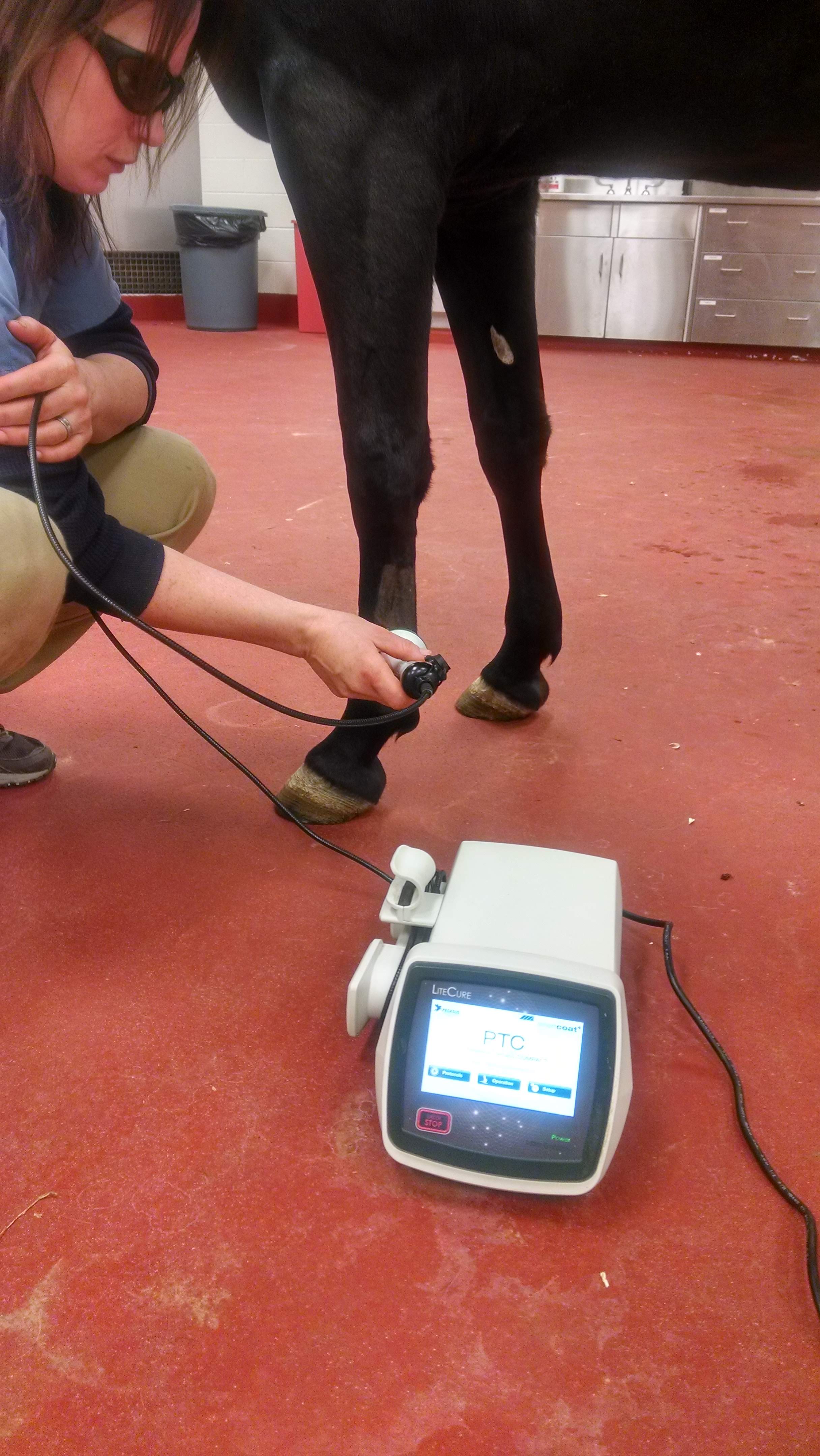How Laser Therapy in Horse Therapy Is Changing Vet Take Care Of Equines
Laser therapy has actually emerged as a transformative strategy in equine vet treatment, providing a non-invasive solution that accelerates recovery and boosts overall wellness. The transportability and convenience of laser therapy tools additionally highlight their expanding indispensability amongst veterinarians.
Comprehending Laser Therapy

The technology behind laser therapy is based in the principle of photochemistry, where photons are soaked up by chromophores within cells, bring about enhanced ATP production and inflection of responsive oxygen species (Equine Therapy). This, subsequently, promotes cellular proliferation, reduces swelling, and increases recovery. Vet practitioners use different kinds of lasers, including low-level lasers (LLLT) and high-power Course IV lasers, depending on the particular healing goals and the nature of the equine condition being treated
Various laser wavelengths and power settings are very carefully selected to target different cells depths and attain desired professional outcomes. Safety and security protocols are paramount, as improper usage can cause thermal damages or suboptimal restorative results. Therefore, a comprehensive understanding of laser treatment's systems and applications is critical for its reliable implementation in equine vet practice.
Benefits for Horse Wellness
The myriad advantages of laser therapy for equine health and wellness encompass enhanced healing, pain reduction, and improved mobility. This innovative therapy modality leverages particular wavelengths of light to permeate tissues, stimulating cellular function and promoting fast tissue repair work. The non-invasive nature of laser treatment ensures very little tension and pain for the steed, assisting in a smoother healing process.
Enhanced healing is one of the primary advantages, as laser treatment increases cellular regrowth and collagen synthesis. Discomfort decrease is attained through the anti-inflammatory results of laser therapy, which lowers swelling and decreases the production of pain-inducing chemicals.
Enhanced flexibility is another important advantage, particularly for performance and functioning horses. By minimizing swelling and discomfort, and enhancing tissue fixing, laser treatment helps in recovering joint function and muscular tissue flexibility. The advancing impact of these benefits is not just a quicker return to typical task yet also a general enhancement in the horse's lifestyle. Therefore, laser treatment stands as a transformative device in modern horse vet care.
Common Problems Treated
Laser therapy has become a versatile treatment alternative for a range of usual equine problems. Among these, musculoskeletal injuries are particularly open to laser therapy. Equine Therapy. Soft tissue injuries, such as tendonitis and tendon stress, take advantage of the anti-inflammatory and analgesic impacts of laser treatments, which speed up recovery and minimize discomfort. In addition, laser therapy works for problems like osteoarthritis, where it assists minimize joint swelling and promote tissue repair work.
Wound management is one more location where laser therapy has shown substantial promise. Chronic wounds or slow-healing ulcers can be especially challenging in steeds, yet laser therapy enhances cellular regeneration and enhances blood circulation, thus accelerating the recovery procedure. In addition, laser therapies have been effectively utilized in taking care of unguis problems such as laminitis and abscesses, alleviating pain and promoting quicker healing.

Innovation Behind Laser Treatment
Beyond the myriad problems treatable with laser therapy, the technology itself advantages more detailed exam. At the heart of laser therapy is the use of specific wavelengths of light to pass through cells and evoke organic reactions. These wavelengths, normally ranging from 600 to 1000 nanometers, are uniquely absorbed by chromophores in the skin, muscular tissue, and various other tissues, prompting a waterfall of mobile events.
Laser tools used in veterinary medicine frequently use low-level laser therapy (LLLT) or chilly laser treatment. Unlike high-powered surgical lasers, these tools operate at reduced power levels, optimizing therapeutic benefits while lessening thermal damages. The power from the laser light promotes adenosine triphosphate (ATP) production, boosts cellular metabolic process, and accelerates cells repair procedures.

Success Stories and Study

Showcasing the substantial advantages of laser treatment, countless success stories and situation studies brighten its transformative effect on equine health and wellness. One such situation includes a pure-blooded racehorse suffering from persistent tendonitis. Conventional therapies produced visit the website marginal enhancement, but after incorporating laser treatment right into the routine, the steed displayed significant reductions in swelling and pain within weeks, ultimately returning to affordable racing.
An additional engaging example features a dressage steed identified with severe pain in the back, restricting its efficiency. A vet group utilized low-level laser treatment (LLLT) to target the irritated locations, leading to marked renovation in versatility and a remarkable decline in pain. Over several sessions, the horse reclaimed its peak type, showcasing the efficacy of laser therapy in dealing with musculoskeletal problems.
In addition, a study performed at a leading equine center checked out 50 equines with numerous soft cells injuries treated with laser therapy. The outcomes stood out: 85% of the steeds showed sped up recovery times and boosted flexibility. These instances highlight the convenience and performance you can try here of laser treatment in equine medicine, using a non-invasive, scientifically-backed technique to boosting recovery and efficiency in horses.
Verdict
Laser treatment is revolutionizing equine vet treatment by offering a non-invasive treatment that speeds up recovery, minimizes inflammation, and relieves discomfort. With its efficiency in dealing with a series of problems, from bone and joint injuries to chronic disorders like osteo arthritis, this innovation substantially enhances equine wellness and mobility. The portability and versatility of laser treatment even more underscore its transformative effect on vet methods, solidifying its function as an essential tool in contemporary equine medical care.